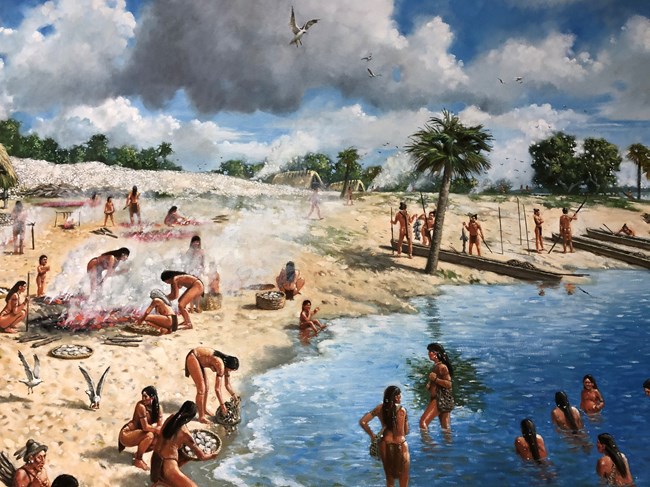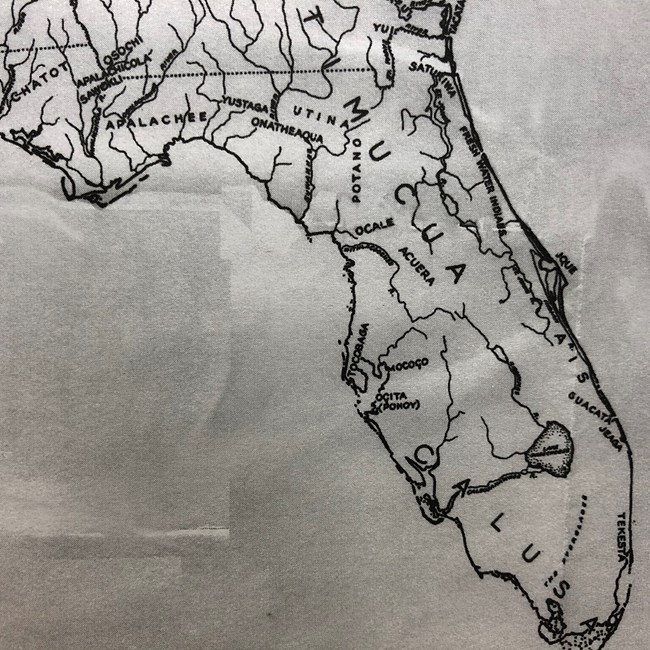Last updated: January 28, 2025
Article
Canaveral National Seashore Pre-Columbian People

NPS/Photo
Painting: Martin Pate
In the Canaveral National Seashore area beginning in 2,000 Before Common Era (BCE), shellfish became increasingly important for dietary needs. Camps began forming along what is now called Mosquito Lagoon. The area environment was much like it is today. Fish and shellfish were plentiful in wetland areas. Archeological evidence suggests that residents established base camps for living and travelled short distances to processing site camps for shellfish harvesting and fishing where there would be only short stays. Shellfish harvesting was very popular. Sites were harvested until the shellfish were to small to harvest. They would then move to harvest in a different area, to allow for the overharvested site to recover. They would process oysters, clams, and fish at the waters edge. There they would smoke there foods on a drying rack over a smoldering fire. After which their catch could be stored away to be eaten at a later date. Canoes were in use to paddle into the lagoon for harvesting as well.

Detail from "Location of Indian tribes in the Southeast about the year 1650." (From Swanton, The Indians of the Southeastern United States.)
Was the seashore land controlled by the Timucuan or the Ai's? It is unclear where exactly the boundary between the Timucuan and the Ai's lies. Archeological evidence points to the Surruque being a part of the Timucuan nation. Although the Ai's language matched the Surrruques more than the Timucuan. The Ai's are thought to be affiliated geogrphically with the southern part of the Mosquito Lagoon and the Indian River which was once called Rio d' Ais by the Spanish. The Calusa are thought to communicate more with the Ai's than did the Timucuan.
Resources:
- Parker, S. R. (2008). Canaveral National Seashore historic resource study. Atlanta, GA: Cultural Resources Division, Southeast Regional Office, National Park Service.
